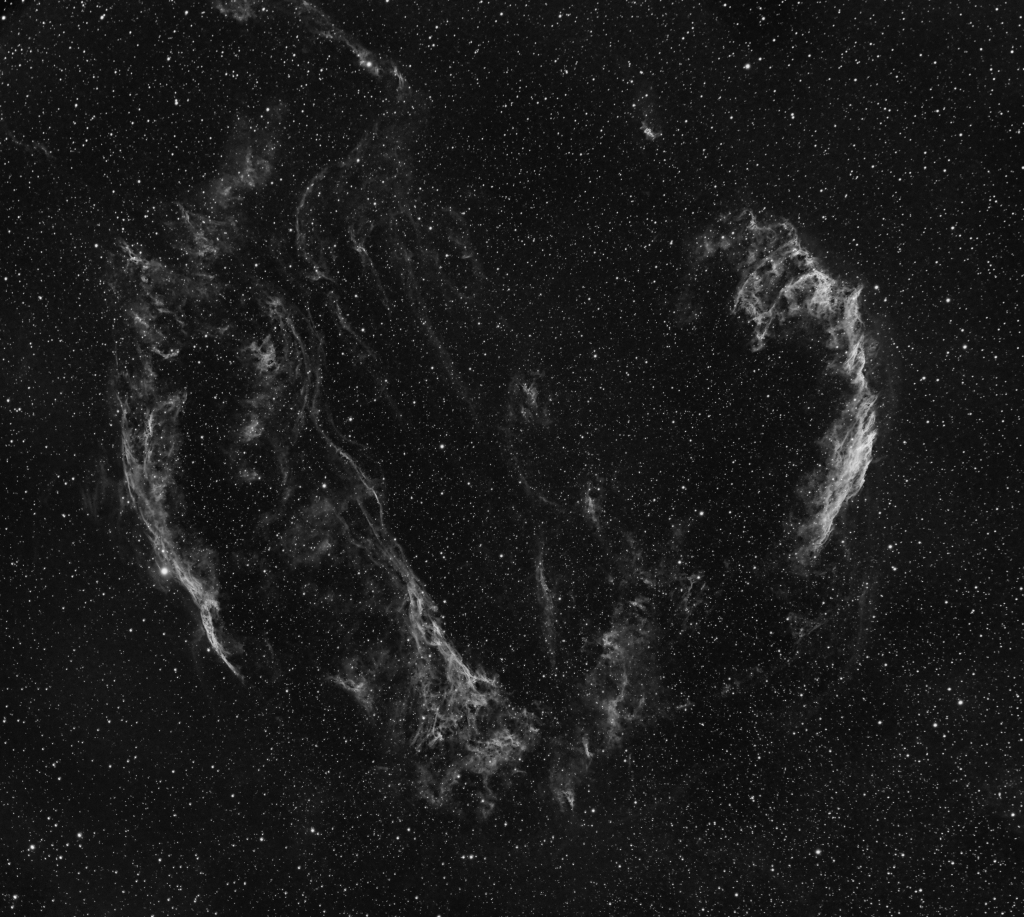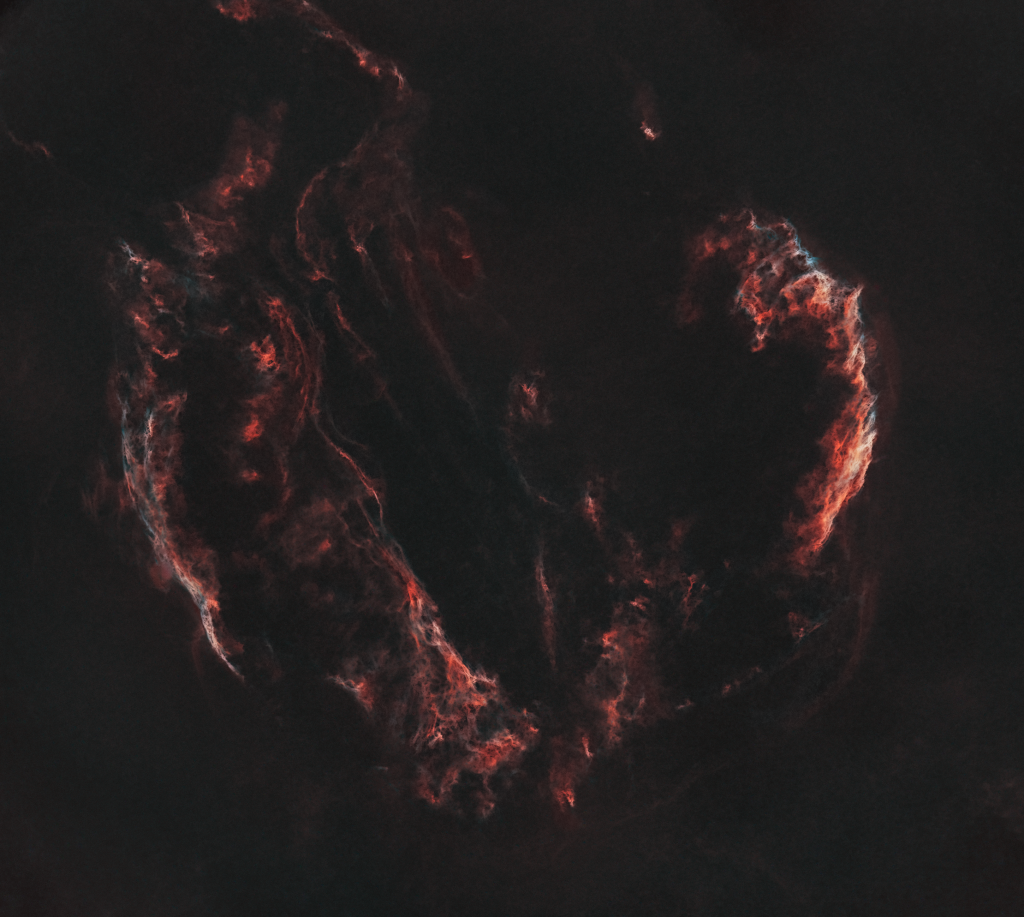
The Veil Nebula is a cloud of heated and ionized gas and dust in the constellation Cygnus.[4]
It constitutes the visible portions of the Cygnus Loop,[5] a supernova remnant, many portions of which have acquired their own individual names and catalogue identifiers. The source supernova was a star 20 times more massive than the Sun which exploded between 10,000 and 20,000 years ago.[2] At the time of explosion, the supernova would have appeared brighter than Venus in the sky, and visible in daytime.[6] The remnants have since expanded to cover an area of the sky roughly 3 degrees in diameter (about 6 times the diameter, and 36 times the area, of the full Moon).[4] While previous distance estimates have ranged from 1200 to 5800 light-years, a recent determination of 2400 light-years is based on direct astrometric measurements.[2] (The distance estimates affect also the estimates of size and age.)
The Hubble Space Telescope captured several images of the nebula. The analysis of the emissions from the nebula indicate the presence of oxygen, sulfur, and hydrogen.[7] The Cygnus Loop is also a strong emitter of radio waves and x-rays.[8]
 Equipment
Equipment
- Imaging Telescopes Or Lenses William Optics 81GT IV
- Imaging Cameras ZWO ASI 6200 MM Pro
- Mounts Celestron Advanced VX Goto GEM Celestron AVX
- Filters ZWO SII 7nm 2″ · ZWO OIII 7nm 2″ · ZWO H-alpha 7nm 2″
- Accessories William Optics Flat 6AIII William optics 6aiii
- Software Adobe Photoshop 2021 · PixInsight 1.8 Ripley PinInsight 1.8.8
- Guiding Telescopes Or Lenses William Optics RedCat 51 Petzval APO Redcat 51
- Guiding Cameras ZWO ASI522mc-pro color ZWO
Acquisition details
- Dates:
- Aug. 22, 2021 · Aug. 24, 2021
- Frames:
-
ZWO H-alpha 7nm 2″: 37×180″ (1h 51′) (gain: 100.00) -15°C bin 1×1
ZWO OIII 7nm 2″: 17×180″ (51′) (gain: 100.00) -15°C bin 1×1
ZWO SII 7nm 2″: 22×180″ (1h 6′) (gain: 100.00) -15°C bin 1×1 - Integration: 3h 48′
- Avg. Moon age:15.78 days
Avg. Moon phase:97.70%
RA center: 20h51m26s.86
DEC center: +31°05′14″.10
Pixel scale: 8.045 arcsec/pixel
Orientation: 145.888 degrees
Field radius: 2.429 degrees
Find images in the same area
Resolution: 1622×1452
Locations: Gamaholjad, Fareham, United Kingdom
Data source: Backyard
Components of the Veil Nebula
In modern usage, the names Veil Nebula, Cirrus Nebula, and Filamentary Nebula generally refer to all the visible structure of the remnant, or even to the entire loop itself. The structure is so large that several NGC numbers were assigned to various arcs of the nebula.[11] There are three main visual components:
- The Western Veil (also known as Caldwell 34), consisting of NGC 6960 (the “Witch’s Broom”,[12] Lacework Nebula,[8] “Filamentary Nebula”[12]) near the foreground star 52 Cygni;
- The Eastern Veil (also known as Caldwell 33), whose brightest area is NGC 6992, trailing off farther south into NGC 6995 (together with NGC 6992 also known as “Network Nebula”[13]) and IC 1340; and
- Pickering’s Triangle (or Pickering’s Triangular Wisp), brightest at the north central edge of the loop, but visible in photographs continuing toward the central area of the loop.
NGC 6974 and NGC 6979 are luminous knots in a fainter patch of nebulosity on the northern rim between NGC 6992 and Pickering’s Triangle.[14][15]




